Written By Shirshendu Sengupta

Did you know there are ‘Mummies’ in the Netherlands?
Before we begin our story today, let me ask you a “Did you know?” question. Did you know there are Mummies in the Netherlands? That, too, naturally mummified? If not, then you ought to visit this place. It’s called the Mummiekelder (Mummy Cellar) and is housed in the crypt of a small church in Wiuwert, a tiny village in the province of Friesland. It is still not scientifically proven how the bodies may be so well preserved since 1609. The crypt is a mystery and houses the secret of Wiuwert. Today I’m here to share with you the riddled story of Wiuwert’s ancient mummies.
Where is Friesland?
Friesland, historically called Frisia, is the northernmost province of the Netherlands. Friesland has a long coastline that stretches along the IJsselmeer (the largest inland lake of Western Europe) and the Wadden Sea. It is mainly located on the mainland but also includes several small Wadden islands. The Frisians (as they proudly call themselves) consider themselves separate from the rest of the Dutch and hence have their own flag and language named West Frisian (or simply Frisian).
Where is Wiuwert?
Wieuwert is located in the heart of Friesland, between Leeuwarden, Sneek and Franeker. Wieuwert originated on a mound around the beginning of the Christian era. For a long time, the inhabitants were focused on fishing, but from the 18th century, it became more and more agricultural. Today, the village has only 240 inhabitants, but annually more than 10,000 tourists visit the 19th century reformed church in the village. Not to attend a church service there, but to see the burial vault located underneath the church.
The Rise of the Labadists in the Netherlands
In 1650, Jean de Labadie, a 17th-century French Roman Catholic Jesuit priest, joined the Reformed Church, thereby becoming a part of the Pietist movement, a movement within Lutheranism that combines biblical doctrine with reformed emphasis on individual piety and living a disciplined Christian life. In 1669, he founded a radical Protestant community named the Labadists deriving influences from Jansenism, Precicianism, and Reformed Pietism. Labadie’s teachings gained substantial ground in the Netherlands.
Formation of Labadist Community in Wiuwert
After the death of Labadie in 1674, his Dutch followers set up a Labadist community in Wieuwert where reformed pastors came to live from far and wide, leaving their own parishes. The community emphasized strict discipline, separatism, and community property. It thrived to around 600 inhabitants who engaged in occupations like printing, farming and milling with occasional visitors from England, Italy, Poland, and elsewhere. The community lasted until 1730.
The Story behind Nicholas Church of Wiuwert and the Crypt
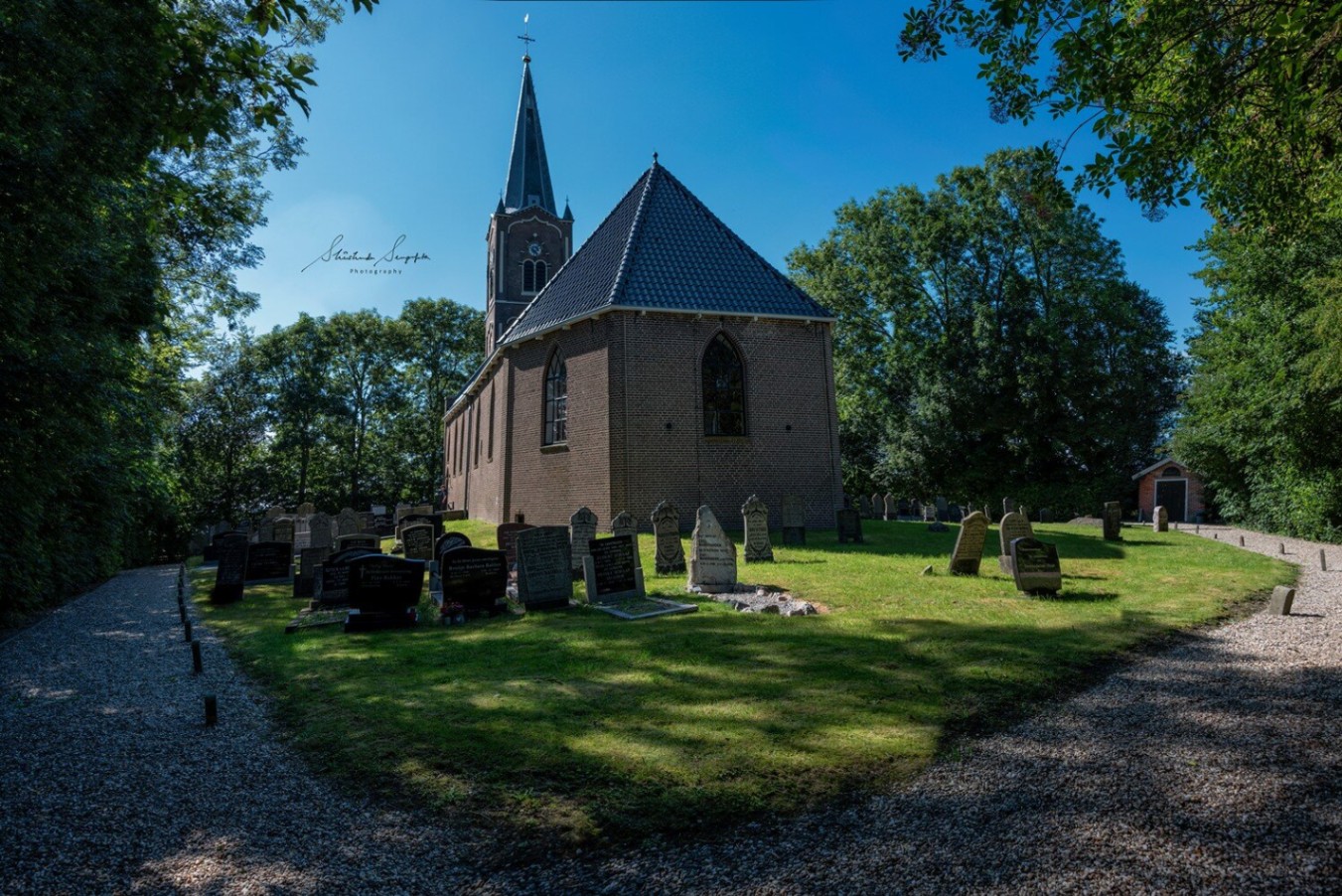
The Saint Nicholas Church (Sint Nicolaaskerk) was originally built during the 12-13th century as a dedication to Nicholas of Myra, which remained so until the Reformation. In 1609, the noble Walta family from the Labadist community living there, ordered to build a crypt beneath the church to be buried there after their death. That’s how the crypt of the church came into being. Later, some other members of the Labadist community were also buried in the crypt.
The Mystery of the Ancient Mummies of Wiuwert
In 1765, carpenters accidentally found seven intact bodies in the burial vault while carving wood in the church. The shocked carpenters ran out of the Nicholas Church in panic. The remarkable thing was that the bodies still had their clothes on, and their skin looked as if they had only just been buried there. Thanks to various studies, we now know that they are natural mummies, not prepared or embalmed, but preserved due to the cellar’s natural climate. During the examinations at the former University of Franeker, two of the seven mummies disintegrated. Another one got smuggled, probably to America, but proof has never been found. The remaining four are a fourteen-year-old girl who died of tuberculosis in 1610, a woman who died a quiet (old-age) death in 1618, a man who suffered a painful death from a jaw abscess, and the goldsmith Stellingwerf, who apparently died peacefully and was last buried in the basement, in 1705. The clothes have decayed, but the bodies of the remaining four people are still there. And for the goldsmith, even the eyeballs are still intact!
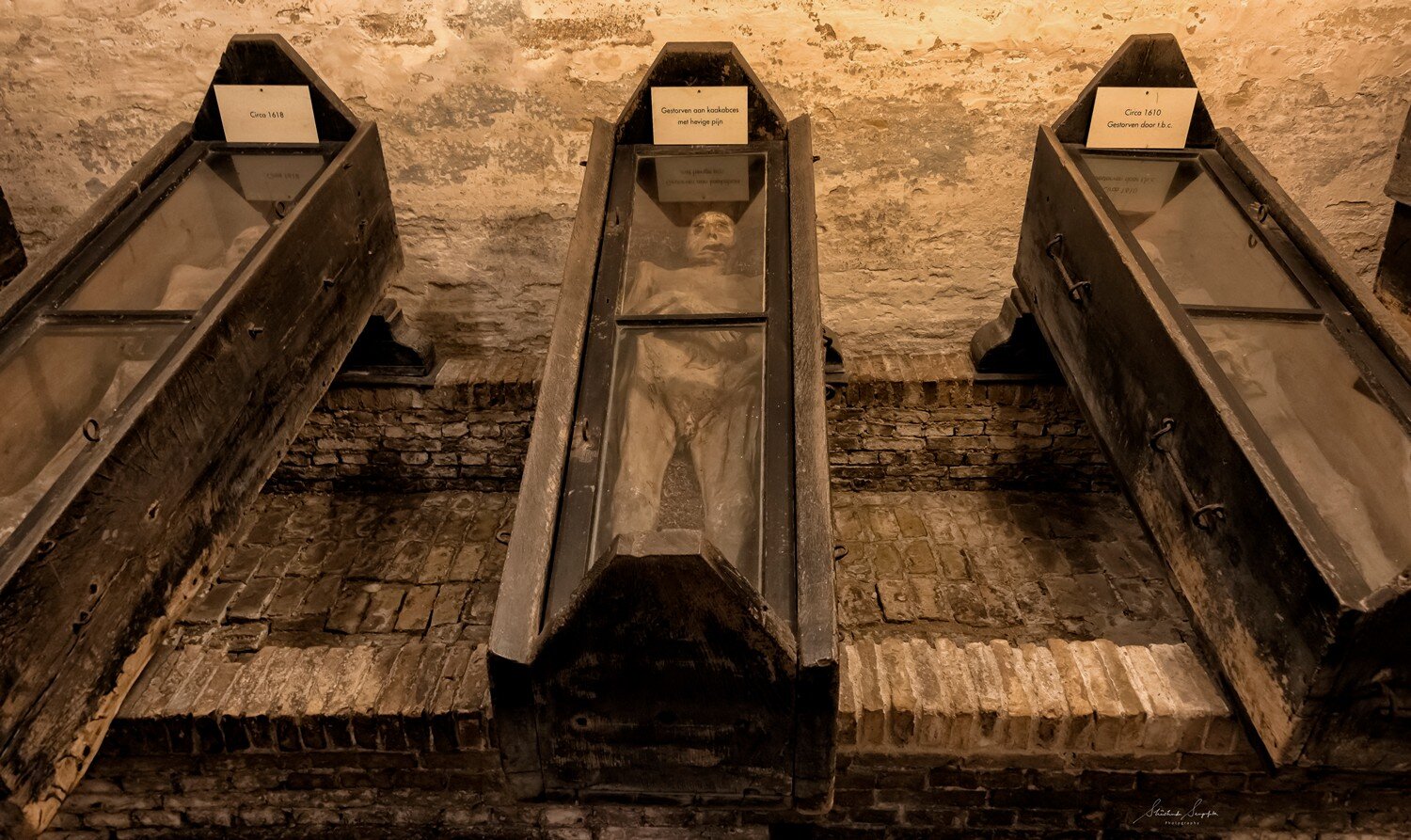
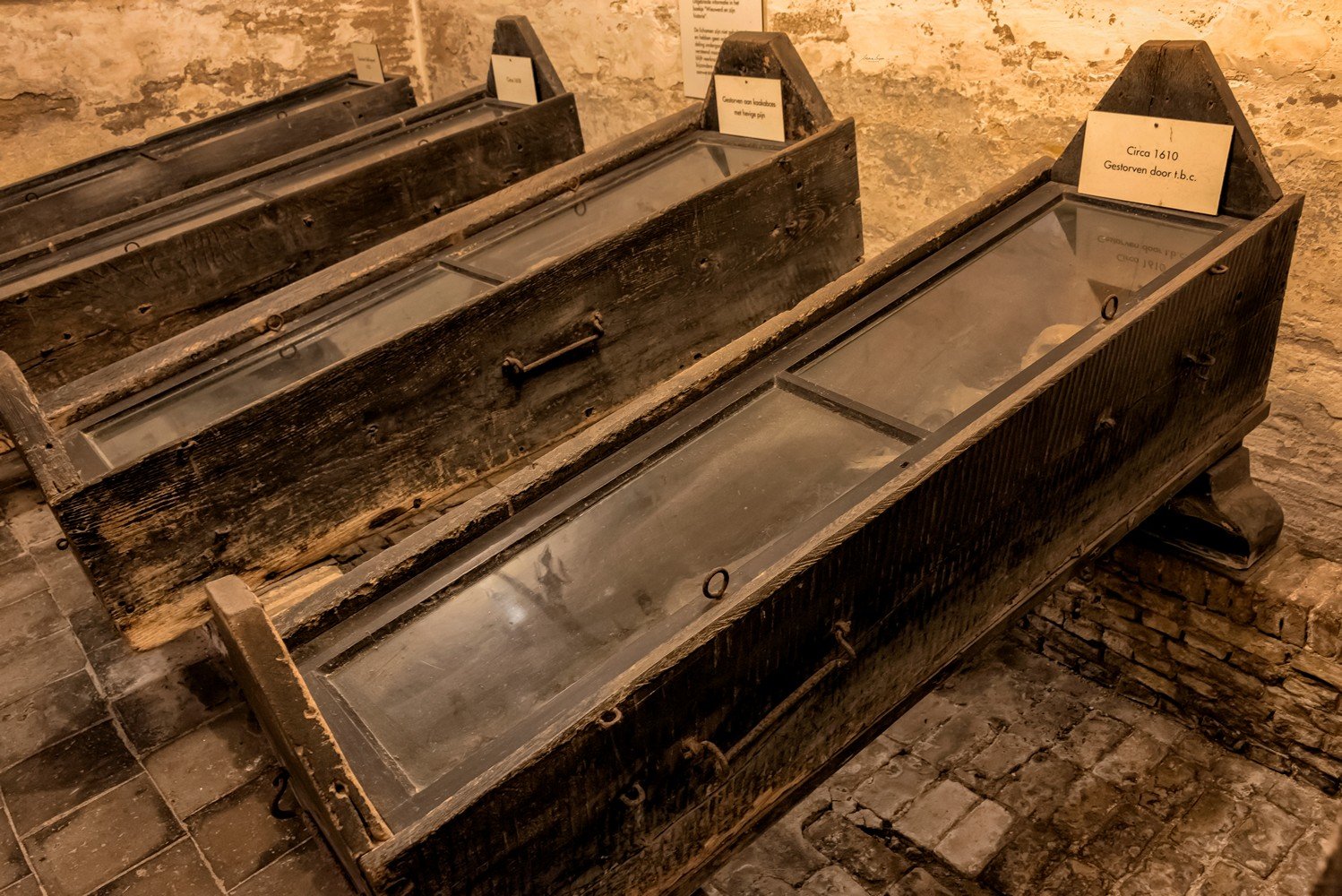
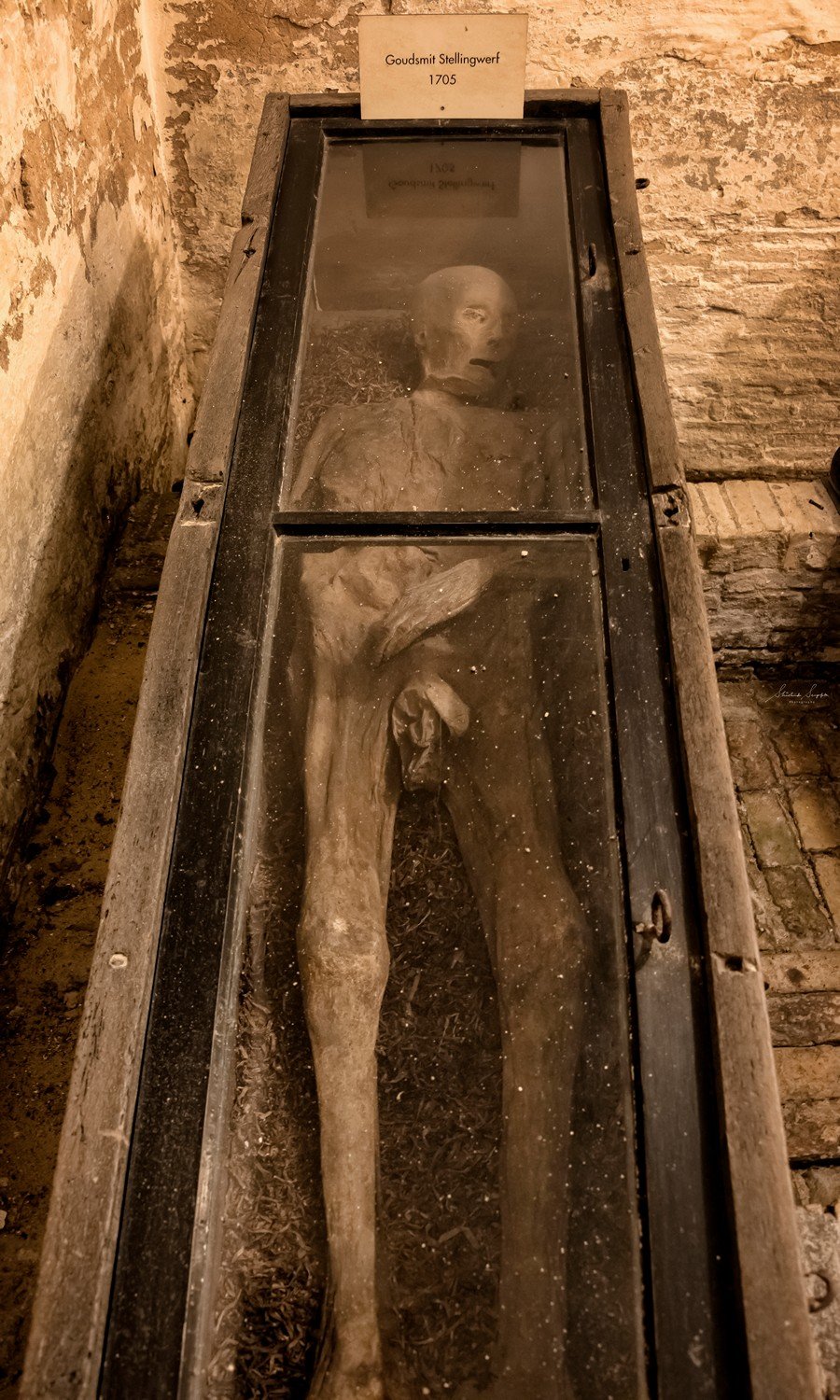
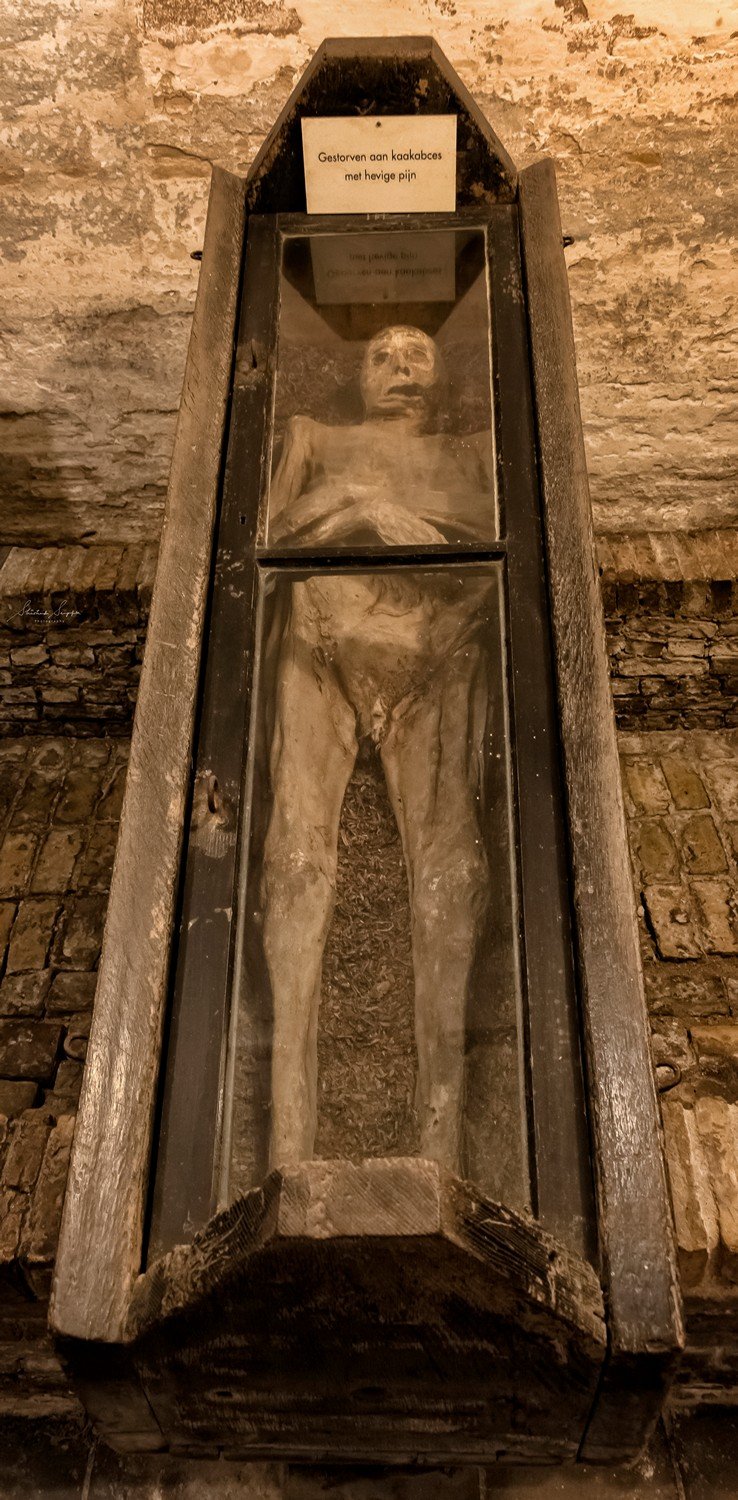
Apart from the human mummies, a few mummified animals like a cat and a few birds were also found. They are also preserved in the crypt.
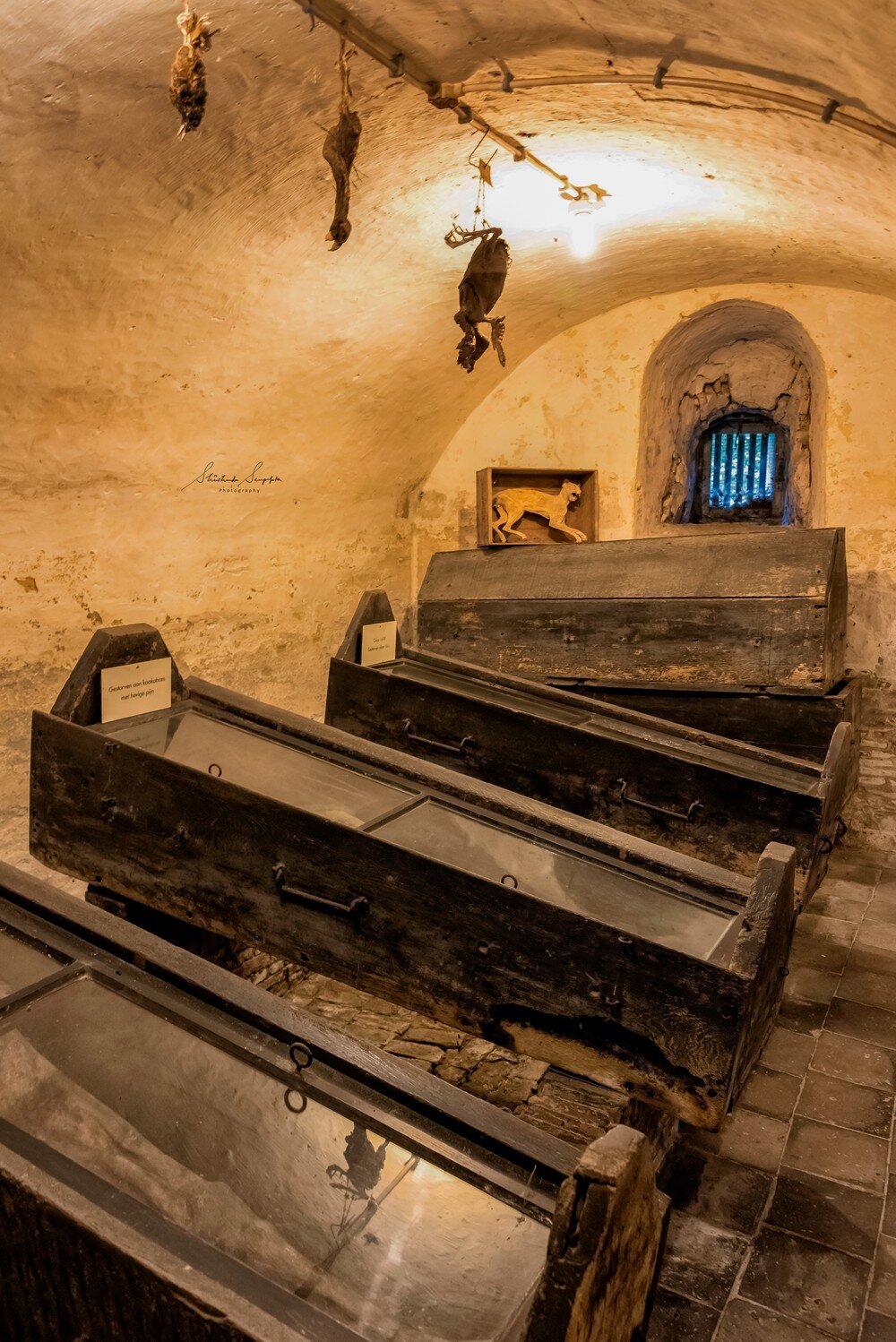
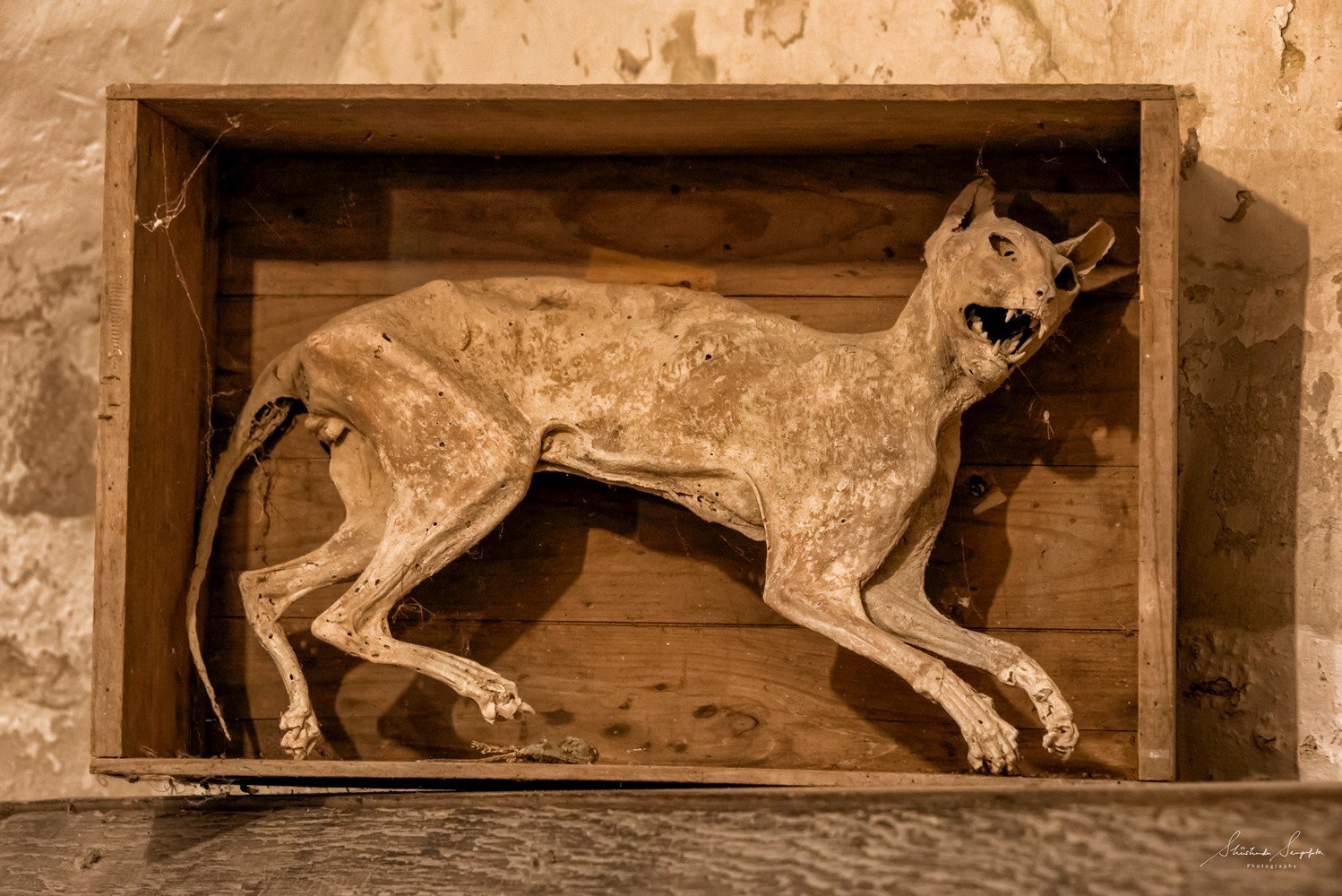
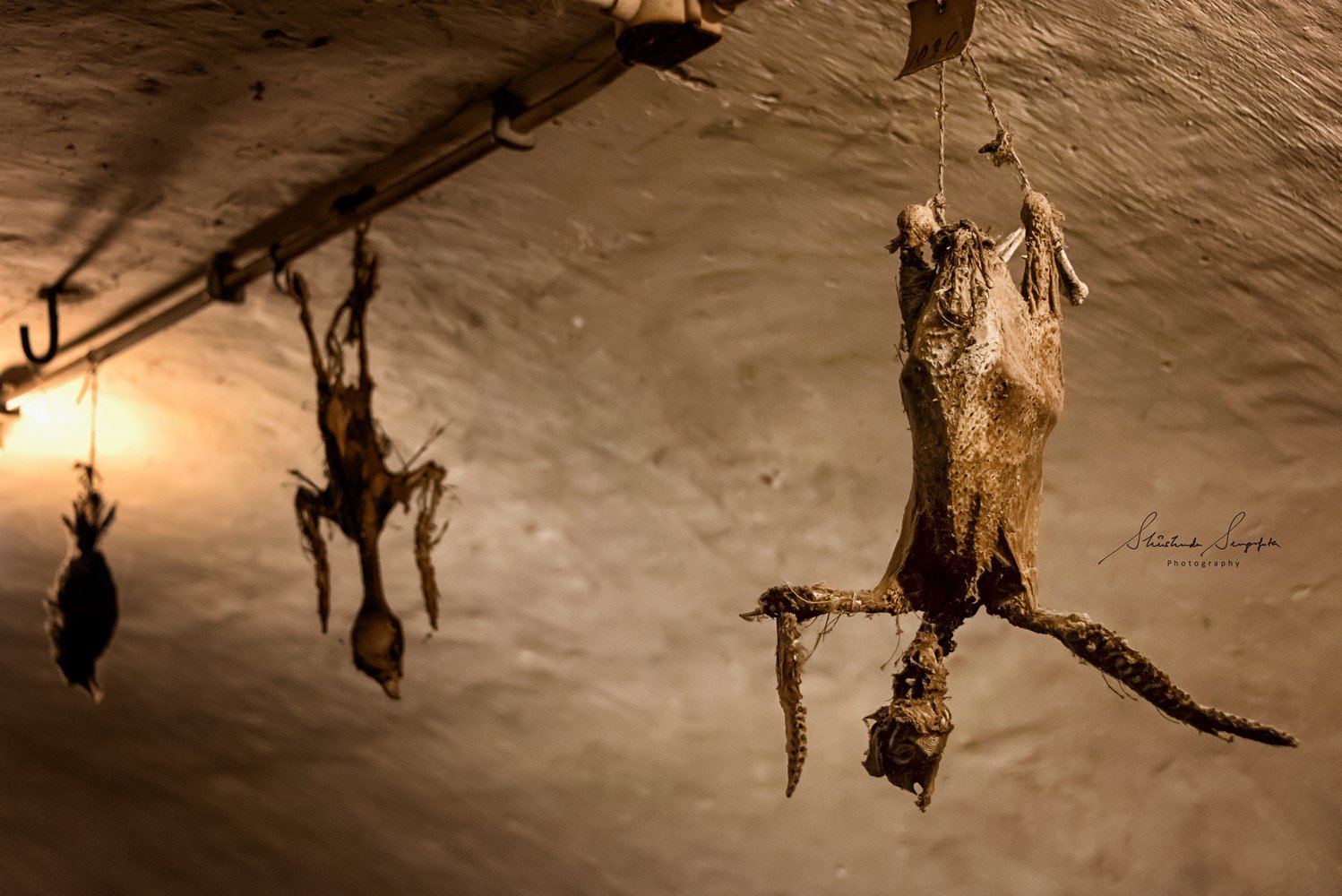
Visiting the Mummiekelder
Address: The Terp 1, 8637 VH Wiuwert
Map created with Wanderlog, a travel planner on iOS and Android
Parking: You have a few parking slots beside the church. If they are full, you can leave your car anywhere on the side of the street.
Reservation: To visit the Mummiekelder, you need to make a reservation by phone or by mail at least 24 hours in advance to [email protected]
Opening Hours and Ticket Prices: For information on opening hours and ticket prices, visit their website mentioned below.
Website: mummiekelder.nl
Epilogue
So that was the story behind the mummies of Wiuwert in Friesland. Please let us know in the comments below if you enjoyed reading this article.
If you want to know about other hidden treasures in Friesland, please read our article Discover Friesland | 9 Best Places to Visit in Friesland, the Netherlands. And if you want to explore the best hidden gems in the Netherlands, please read our article Netherlands Off The Beaten Track | 32 Best Hidden Gems in the Netherlands. Until then, merry traveling and happy shooting!